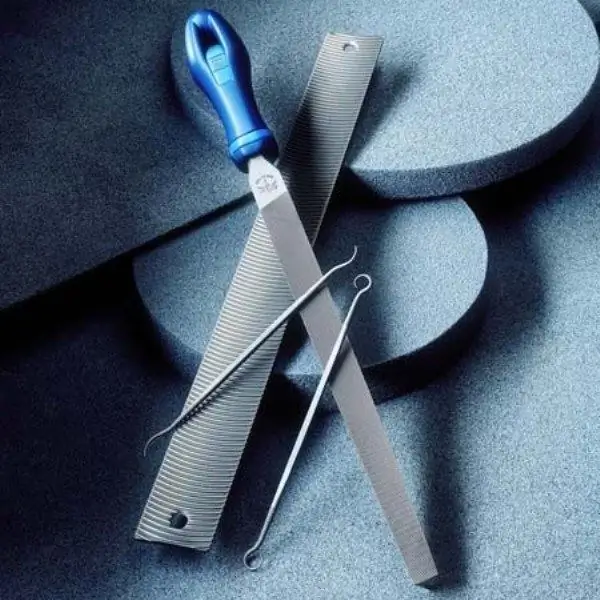Parts made from a wide variety of materials often need to be reworked. Sawing helps to give them the required appearance. This operation is very convenient to carry out using files. Such a tool is very diverse in appearance, shape and purpose. Depending on the complexity of the work, ordinary files, rasps or needle files are used when filing.

What files are there
There are several dozen types of files that differ in their performance characteristics. The purpose of this tool is to remove a layer of material, which can be, for example, wood, metal or plastic. Each file consists of a working part and a handle. A special notch is applied to the body of the tool, due to which it is possible to remove layers of material from the surface of the product. The type of a particular file and its name is determined by the size of the notch.
Files - the general name for a whole line of tools, which includes, among other things, rasps and needle files. Such a tool can be of different sizes and profiles. Most often, craftsmen have to work with flat or square files. There is a tool, the working part of which has a rounded, oval, diamond-shaped or triangular profile. With an arsenal of files of different types and sections, a locksmith can handle parts of a very complex configuration.
What is a rasp for?
A rasp is a rather coarse file that has a large notch. This tool is typically used for pretreating parts made of soft metal, plastic, wood, rubber or leather. A traditional file will not help here, since its working surface is very quickly clogged with material (sawdust or shavings) and stops removing it from the surface of the product.
The most common rasp has a flat section and a blunt nose, although there are tools with a sharp tip. Less often, you have to use round and semicircular rasps. The cut of this coarse file is large and often grooved in front of each tooth. After processing with a rasp, the products are usually fine-tuned with files with a finer notch.
File and its functions
The file has a completely different purpose. It is used for precise and fine finishing of small parts. In production and in everyday life, situations are very often encountered when it is necessary to give a complete look to a metal product of a complex shape, to grind or process a tiny part. Here the file comes to the rescue of the locksmith. This small file with a fine cut is able to get to the most difficult to reach places.
The shape of the working body of the file can be completely different. Experienced craftsmen prefer to have sets of several such files in their household, using them individually or sequentially, one after another. The double notch - the main and the auxiliary - helps to efficiently process the details of the files. The cut number is usually marked on the handle of the tool.







